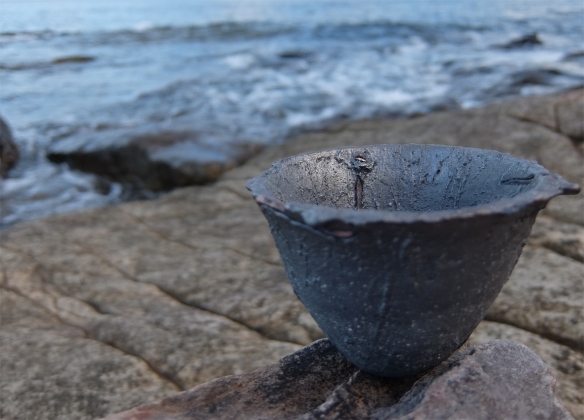The other piece that I’ve been working on is a community sculpture.
Eighteen children from Lochinver primary have prepared designs and tried their hand at wax carving using local beeswax.
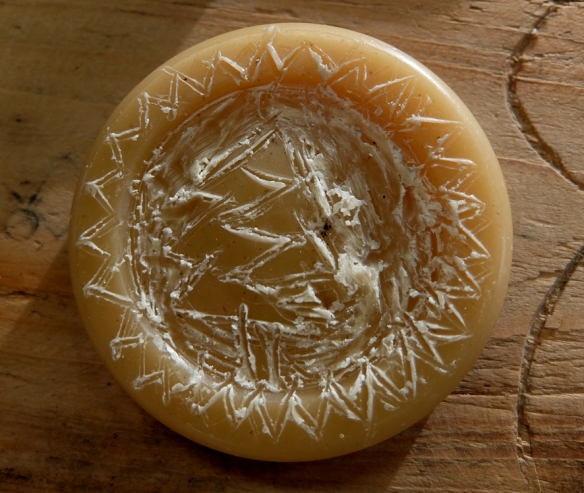
Most of the children also did sand piece-moulds to cast metals beads which we then made up into nettle-stringed necklaces. Thank-you to the people who supported me with this workshop.

I then cleaned up the waxes so that they would cast well; and using the same method as the children (2 part sand moulds), I cast the first sixteen mini sculptures in bronze. I have been cleaning these – cutting of the running system, filing them back, sanding and polishing them.
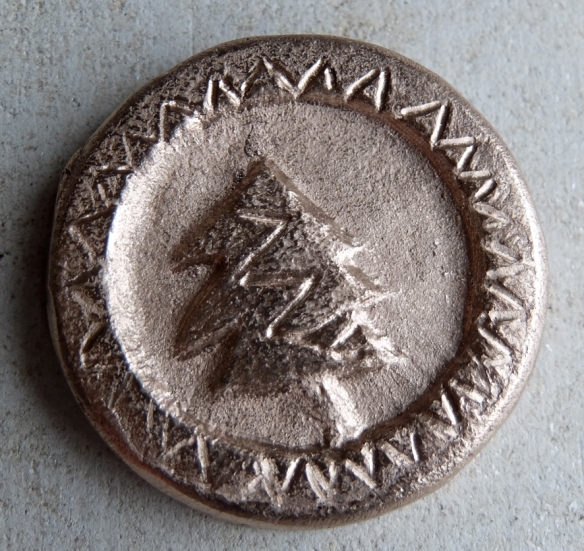
The Ullapool High school children who came to the broch helped run a copper smelt. The copper from that smelt was added to the bronze used for these mini sculptures. The high school pupils also cast pewter pieces using clay models that they had designed themselves.
The community sculpture has been growing with local people making mini sculptures.
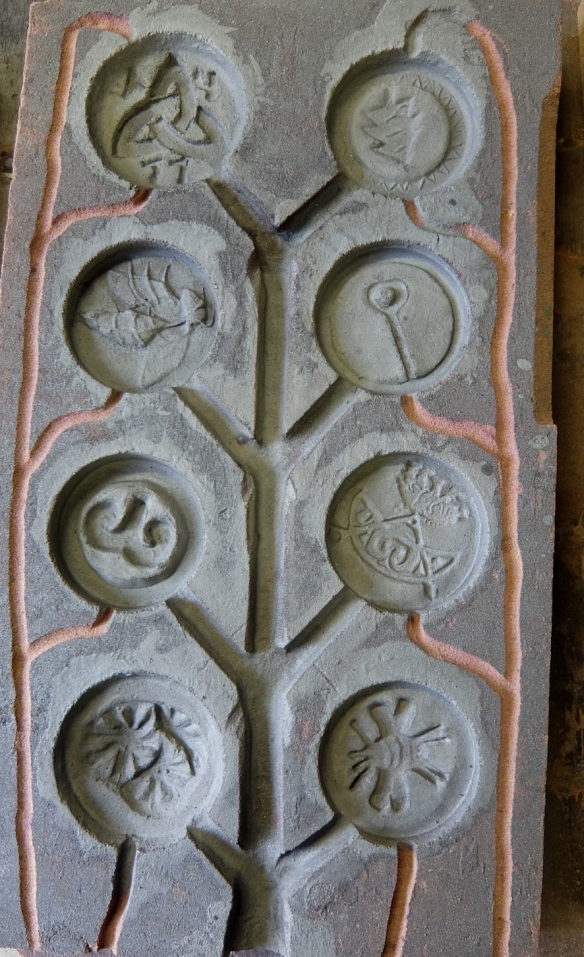 At a public event on Stoer field we smelted some more copper, which will be used in casting these waxes in bronze (thanks, Nigel, Fiona and Boyd)
At a public event on Stoer field we smelted some more copper, which will be used in casting these waxes in bronze (thanks, Nigel, Fiona and Boyd)
Many of the dig volunteers and other people involved with the broch have added their designs, so I have a further 24 waxes cleaned and prepared for casting.
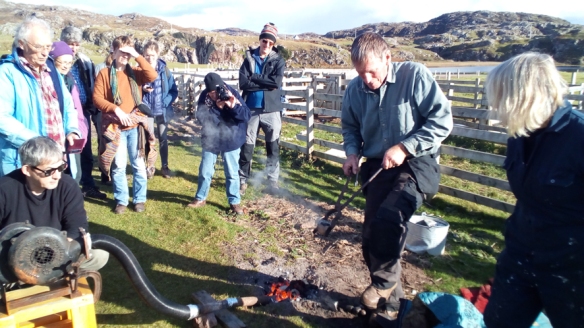
The discussion on where they may be installed continues, but I hope they can be affixed to bedrock in a safe place near the broch.
The final public event at Glen Canisp on 16th November 2018 will be to cast the final waxes for the sculpture (including copper from the public smelt). We also have a special request to demonstrate the alloying of copper with tin to give bronze. I hope to have more details of the event planning soon.

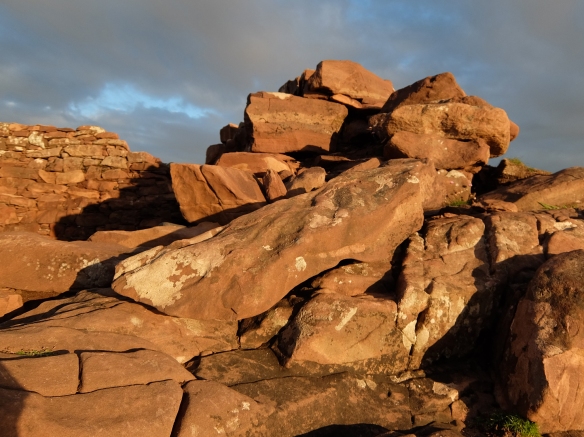 My first impressions of the broch were of the majesty of the stonework and the rock bed that it is built on; and of the disorder of stones that had been part of the broch which fire, sea and time had scattered.
My first impressions of the broch were of the majesty of the stonework and the rock bed that it is built on; and of the disorder of stones that had been part of the broch which fire, sea and time had scattered.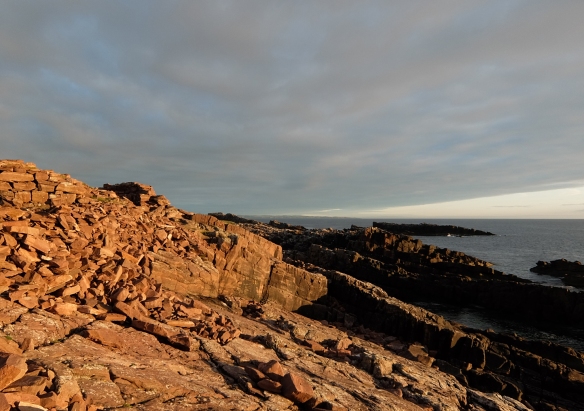
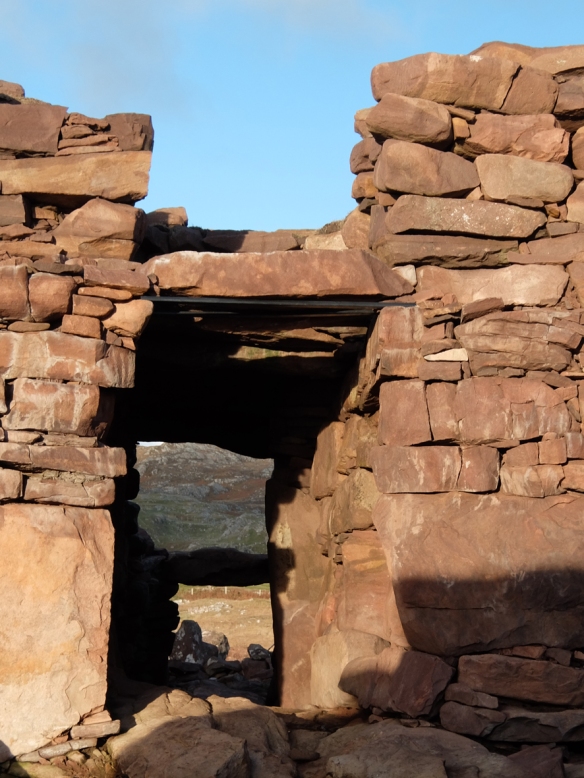

 By Wednesday all was ready to return to copper smelting trials. The smelt balls tend to over heat in the shaft furnace as it’s hard to see what is going on.
By Wednesday all was ready to return to copper smelting trials. The smelt balls tend to over heat in the shaft furnace as it’s hard to see what is going on.






 It looks like we should be able to bring an iron pour to Assynt as part of creating my final piece and involving local people. It’s still a long way to go, but it looks like iron will come to the Iron Age broch. The access to the broch site is a big consideration, as is the weather – molten metal and rain do not mix so we will need careful plans (and shelter). I would not use the actual broch site or anywhere that would adversely impact the site and will probably do a lot of prep work at the Sculpture Workshop.
It looks like we should be able to bring an iron pour to Assynt as part of creating my final piece and involving local people. It’s still a long way to go, but it looks like iron will come to the Iron Age broch. The access to the broch site is a big consideration, as is the weather – molten metal and rain do not mix so we will need careful plans (and shelter). I would not use the actual broch site or anywhere that would adversely impact the site and will probably do a lot of prep work at the Sculpture Workshop. Once I’ve had a chance to meet and talk some more with the archaeologists who are working on the broch finds, I’ll be back up in Assynt to carry on working on the design, meeting people and seeking out resources
Once I’ve had a chance to meet and talk some more with the archaeologists who are working on the broch finds, I’ll be back up in Assynt to carry on working on the design, meeting people and seeking out resources







